#Piano Pedagogy
Explore tagged Tumblr posts
Text
Dr. Maurice Hinson
I have always respected Dr. Hinson’s work and his music. So much so that I went to Connecticut to take a class on Piano Pedagogy with him several years ago. I have also attended several local piano teacher workshops with him. At one of them, he claimed to remember me from that Connecticut class. Whether true or not, I treasure that comment and the signature on a piano book he gave me. We…

View On WordPress
#alfred.com#amazon.com#chamber music#Connecticut#Dr. Maurice Hinson#Juilliard School of Music#MTNA#Music Teachers National Association#O&039;Connor Music Studio#organist#pianist#piano#piano literature#piano pedagogy#piano teacher#video#workshops
0 notes
Text
The way I can comfortably sight read requiem reductions and to some level Alban berg but failed to read a RCM prep A piece
#studying pedagogy#this is so hard I’ll never be able to teach piano#my mood leaving the practice rooms at 3am
1 note
·
View note
Text
introduction ig..
okay, this is weird and odd, i’m sorry
i’m Karol and i’m 16, i’m a psychology and pedagogy student and my pronouns are she/her.
i like ryan ross a lot, p!atd, tyv, mcr, ptv, get scared, deftones, car seat headrest, the cure, falling in reverse, paramore, msi, set it off, malice mizer and musicals.
i play the piano and also like classical and jazz music.
i’ve had singing lessons for four years but i stopped like two years ago, i still like to sing tho.
i love the twilight saga, lots of movies that it’d take too long to list, haikyuu, ohshc, saiki k, evangelion, death note, mirai nikki and some other stuff.
i also read a lot (not books from the booktok… jsyk) and i like to write some dumb poetry or silly sad stories when i feel like it. i also draw sometimes when i’m bored but i wouldn’t call myself good at it.
certified thought daughter. i’m awkward.
this blog will be just a bunch of stuff that goes through my head.. buh bye!!
#ryan ross#paul dano#haikyuu#female writers#introduction#intro post#blog intro#twilight#anime#ohshc#neon genesis evangelion#nge#death note#p!atd#tyv#mcr#ptv#get scared#deftones#csh#the cure#falling in reverse#paramore#msi#set it off#malice mizer#musical theatre#jazz#piano
12 notes
·
View notes
Text
Walter Franklin Anderson
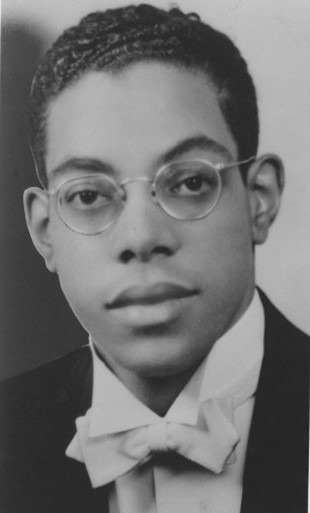
The grandson of formerly enslaved people, Walter Franklin Anderson, classical pianist, organist, composer, jazz musician, community activist, and academician, was born on May 12, 1915, in segregated Zanesville, Ohio. Walter was the sixth of nine children of humble beginnings.
Information regarding his parents is not available. Anderson, a child prodigy, began piano studies at age seven, and by 12, he was playing piano and organ professionally while still in elementary school. He was the only Black student to graduate from William D. Lash High School in Zanesville in 1932. Although a talented musician, Anderson was not a member of any of the school’s music ensembles, including the Glee Club or orchestra. Afterward, he enrolled in the Oberlin Conservatory of Music in Oberlin, Ohio, 100 miles north of his hometown, and received a Bachelor of Music in piano and organ in 1936. Anderson continued his studies at Berkshire (Tanglewood, the summer home of the Boston Symphony Orchestra) and the Cleveland Institute of Music in Cleveland, Ohio.
From 1939 to 1942, Anderson taught Applied Piano, Voice Pedagogy, and music theory at the Kentucky State College for Negroes (now Kentucky State University) in Frankfort. In 1943, Anderson married Dorothy Eleanor Ross (Cheeks) from Atlanta, Georgia. They parented two children, Sandra Elaine Anderson Mastin and David Ross Anderson, before the marriage ended in a divorce in 1945.
In 1946, Anderson was appointed the head of the music department at Antioch College in Yellow Springs, Ohio, thus becoming the first African American named to chair a department outside of the nation’s historically black colleges. Two years later, Anderson was a Rosenwald Fellow in composition from 1948 to 1949, where his variations on the Negro Spiritual, “Lord, Lord, Lord,” was performed by the Cleveland Orchestra. Moreover, John Sebastian, the conductor of the Orchestra, commissioned him to write “Concerto for Harmonica and Orchestra” for a performance with the same orchestra. In 1950, Anderson’s composition, “D-Day Prayer Cantata,” for the sixth anniversary of the World War II invasion, was performed on a national CBS telecast. In 1952, Anderson received the equivalent of a doctoral degree as a fellow of the American Guild of Organists. He left his administrative post at Antioch College in 1965.
In 1969, Anderson was named director of music programs at the National Endowment for the Arts, where he created model funding guidelines and pioneered the concept of the challenge grant. In addition, he spearheaded numerous projects and developed ideas at the then-new agency for supporting music creation and performance, specifically for orchestras, operas, jazz, and choral ensembles and conservatories.
Anderson was the recipient of four honorary doctorates in music over his professional career, including one from Berea College in Berea, Kentucky, in 1970. He retired from NEA in 1983. During this period, he became a presidential fellow at the Aspen Institute for Humanistic Studies and a recipient of the Cleveland Arts Prize for Distinguished Service to the Arts. In 1993, the American Symphony Orchestra League recognized Anderson as one of 50 people whose talents and efforts significantly touched the lives of numerous musicians and orchestras. He was also a member of the Advisory Council to the Institute of the Black World at the Martin Luther King, Jr. Memorial Center.
https://www.blackpast.org/african-american-history/people-african-american-history/walter-franklin-anderson-1915-2003/
25 notes
·
View notes
Text
About two of my moots have high school aus so like.
Idk how anything works in the rest of the world so if I were to make one I'd base it off the italian school system. Fuck you all
Iceland is doing liceo musicale. Fucking real that guy is gonna live off of his god forsaken piano. That or liceo classico because he hates himself that much
Norway is so doing liceo scientifico without any doubt
I have never thought of what Denmark would do as a job but like I feel like he just goes as firefighter. Which doesn't require any specific high school (i dont thjnk any jobs really do anyway ....) BUT i also think he could be a good paramedic for which liceo scientifico would be cool imo. Spoiler he changed school at the second year and he does the mechanic field in an istituto tecnico.
Hong Kong does istituto tecnico in amministration, finance and marketing. That or liceo delle scienze umane
Explanation for non-italians
Italian high schools are divided in three categories: Liceo, which aims at preparing students for university; Istituto tecnico, which includes practical work but still leads to a university qualification; and istituto professionale, which is istituto tecnico without the university part.
These schools are also subdivided in indirizzi, aka the field that includes certain courses you kinda gotta do to work (which doesn't really determine what you're going to do for the rest of your life bc you can still change in university -- hence why I said it doesn't really matter what school you do)
Liceo types are,
- liceo classico, which is dedicated to humanities. There you do stuff like latin, ancient greek and philosophy. shit i could never do willingly ngl
- liceo scientifico, which is dedicated to scientific studies. It shares stuff like latin and philosophy with liceo classico but it's more oriented towards mathematics, biology, earth/computer science and allat
- liceo linguistico (pain)(trust i go there), which focuses more on foreign languages. Usually there they teach English, Spanish, French and German. Usually you dont do all four, you can choose two between French, German and Spanish while ofc English is mandatory. This one does literature in language which is really cool.
- liceo delle scienze umane, where students are taught stuff like sociology, pedagogy, psychology and social research, really cool stuff indeed
- liceo artistico, which focuses on art (duh), both theoric and practical
- liceo musicale e coreutico, which is, you will never guess, a music school thingy (IDFK IVE NEVER HEARD OF IT BEFORE SOMEHOW AND I LIVE HERE.) Coreutico is more about dance though
Istituti tecnici have two macrodivisions, which are tecnico economico (economy) and tecnico tecnologico (technology)
Tecnico economico includes:
- amministrazione, finanza e marketing (amministration, finance and marketing), which specialises in economy, law, accounting and stuff like that
- sistemi informativi aziendali (IT), which do IT and information systems
- turistico (tourism)(my second option fr), which i was told is like liceo linguistico just with economy and all that stuff instead of literature and shit
,, while tecnico tecnologico does:
- meccanica (mechanics)
- trasporti e logistica (transport and logistics)
- elettronica (electronics)
- grafica e comunicazioni (graphics and communications)
- chimica, materiali e biotecnologie (chemistry, materials and biotechnology)
- sistema moda ("fashion system")
- agraria (agriculture)(l'agrario.......)
- costruzioni (constructions)
Istituto professionale does all labour stuff, like agriculture, technical stuff, handicrafts and gastronomy. Doing this school you can start working as soon as school is over
4 notes
·
View notes
Text


DR Self 🌙💖
🌙LUNA LILY WAYNE💫
- nickname(s): little moon, moonbeam, lunes (mostly tim and the girls), lulu (mostly childhood)
- alias: baby/little bat
- birthday: 17. October
- age: 20
- height: 163cm
- hometown: gotham
- race: human
- sexuality: straight
- pronouns: she/her
- gender: female
- hair color: blonde (natural), pastel pink (dyed)
- eye color: blue (Bruce's eyes)
- occupation: studies pedagogy at gotham University
- language(s): English, French, German, Japanese
- s/o: Jason Todd
- positive traits:
very kind, always tries to help, very empathetic and compassionate, is more bubbly and fun when she knows the people around, creative, introverted
- negative traits:
little shy, stubborn, naive sometimes, trusts too fast, insecure sometimes, definitely (a little?) spoiled and coddled
- likes: books, movies, superheroes and vigilantes, fall, rain, night time, boba tea, the color pink, dogs, cats
- dislikes: too hot weather, waking up early, thunderstorms, if other people are sad/hurt, insects
- hobbies: reading, dancing, watching movies, journaling, video games, painting, piano, baking, Horse riding (mostly as teen/kid)
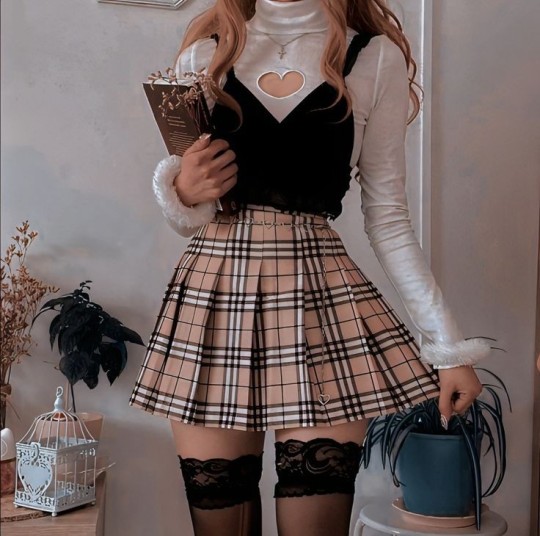

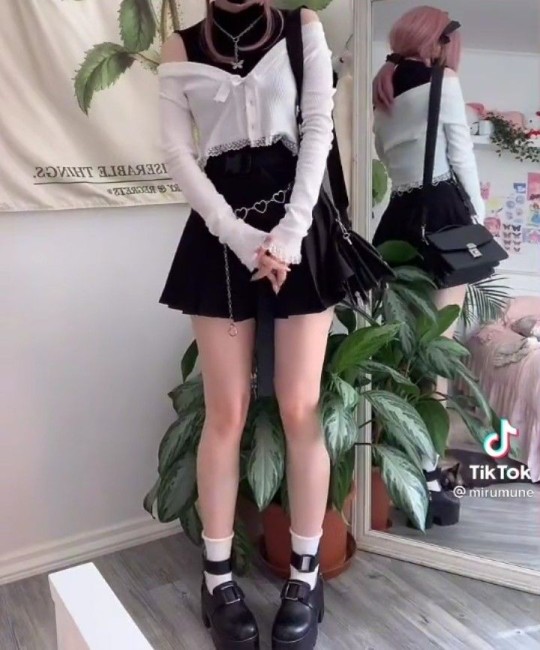

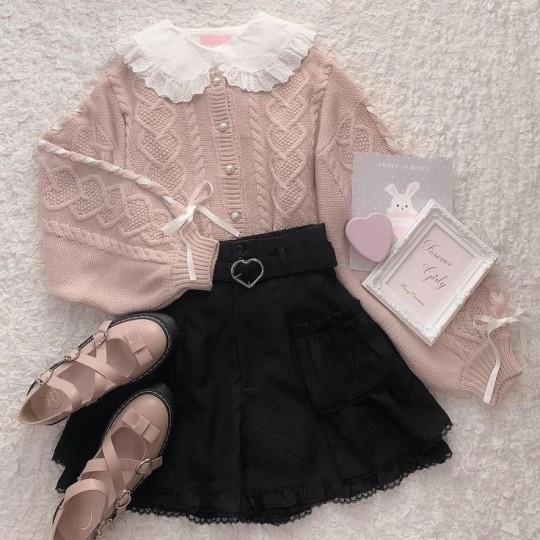

I'm the daughter of Bruce Wayne and Maria Claire Windfield, a random fling he had. She didn't tell him she was pregnant until one day when I was four years old she just showed up at the Manor and handed me over to him and then left Gotham. From that day on I grew up in the Manor.
Dick was only there a few months when I showed up but he helped me settle in and always played with me even though I was much younger than him. Then a few years later Jason came along and the three of us became inseparable. I always had kind of a crush on them but like more of a little girl crush because I admired them and loved spending time with them.
After Jason's death, Dick helped me a lot and I tried to help him too. We grew even closer through it all. It was a really hard time and I never like talking or thinking about it. I even had some therapy sessions with Leslie about it.
When Jason came back it was like the best day of my life. Even though he was angry and changed a lot I still saw Jason in him and was just so happy he was back. That's also why I went behind everyone's back to meet him because I just needed to see him with my own eyes.
The second best day of my life was when Jason returned from being away with the Outlaws after two years and rejoined the Batfamily. Then slowly but surely dick, jason and I became our inseparable trio again.
Currently I still live in the Manor and study pedagogy at gotham University. I help out around the cave the first hours of the night and the whole night on weekends.


7 notes
·
View notes
Text
SO MY LITTLE COUSIN’S PIANO TEACHER NEVER BOTHERED TO TEACH HIM WHAT A TIME SIGNATURE WAS. NO WONDER HE RUSHES. HE DOESN’T KNOW THAT THERE ARE A NUMBER OF BEATS PER MEASURE. sorry for shouting just WHAT THE HELL? is this a common thing in music pedagogy of children? because i was doing theory pretty much right away when i did piano and it’s not like he’s too young to understand he is TEN and i was doing theory years before him. also why the hell does this teacher let him advance when he CAN’T KEEP A CONSISTENT BEAT? my god. my fucking god
15 notes
·
View notes
Text
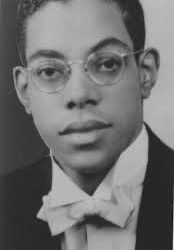
Maestro Dr. Walter Franklin Anderson (May 12, 1915 - November 24, 2003) the grandson of enslaved people was a classical pianist, organist, composer, jazz musician, community activist, and academician, was born in segregated Zanesville, Ohio. He was the sixth of nine children.
Information regarding his parents is not available. He began piano studies at age seven, and by 12, he was playing piano and organ professionally while still in elementary school. He was not a member of any of the school’s music ensembles, including the Glee Club or orchestra. He enrolled in the Oberlin Conservatory of Music and received a BSM in Piano and Organ. He continued his studies at Berkshire and the Cleveland Institute of Music.
He taught Applied Piano, Voice Pedagogy, and music theory at the Kentucky State College for Negroes. He married Dorothy Eleanor Ross (Cheeks) (1943-1945). They had two children.
He was appointed the head of the music department at Antioch College, becoming the first African American named to chair a department outside of an HBCU. He was a Rosenwald Fellow in composition, where his variations on the Negro Spiritual, “Lord, Lord, Lord,” was performed by the Cleveland Orchestra. The conductor of the Orchestra commissioned him to write “Concerto for Harmonica and Orchestra”. His composition, “D-Day Prayer Cantata,” was performed on a national CBS telecast. He received the equivalent of a Ph.D. as a fellow of the American Guild of Organists.
He was named director of music programs at the National Endowment for the Arts. He was the recipient of four honorary doctorates in music over his professional career. He retired from NEA in 1983. He became a presidential fellow at the Aspen Institute for Humanistic Studies and a recipient of the Cleveland Arts Prize for Distinguished Service to the Arts. The American Symphony Orchestra League recognized him as one of 50 people whose talents and efforts touched the lives of numerous musicians and orchestras. He was a member of the Advisory Council of the Institute of the Black World at the Martin Luther King, Jr. Memorial Center. #africanhistory365 #africanexcellence
3 notes
·
View notes
Text
One side effect of studying piano pedagogy is that whenever I watch a show or movie or video where someone is sitting at the piano and they're supposed to be a relatively experienced musician, I am obligated to be insufferable about their hand and body position. Girl, how are you going to get the range of motion to play octave chords fortissimo when your elbows are glued to the side of your ribs. It's your knees that are supposed to be just under the edge of the keyboard, not your bench. Those fingers are just too flat for the scale passages that the soundtrack says you're playing. Is that a slouch-
#the valley is posting#to clarify: while there are many examples of musicians and especially concert pianists who do not use 'perfect posture' when they play#it's almost always situational and based on what is comfortable for them and who their music teachers were#but regardless of different body types and habits; there are some constants in piano playing posture#such as giving your arm(s) enough range of motion to move up and down the keyboard#in general; you want strong fingers with a flexible wrist and the weight coming from your elbow and shoulder rather than your arm#this gives you the best control over the tone you produce - articulation; dynamics; etc#also; don't slouch or hunch over because your strength control comes from your shoulders and it'll also be harder to play like this#concert pianists are not necessarily the people to emulate if you have little/no experience with piano#because the posture that they've developed comes from years of experience and figuring out what each piece requires#for beginners with little/no experience in piano; start with the basic posture and make adjustments if you need to once you've played more
7 notes
·
View notes
Text
Reverso — Shooting Star-Étoile Filante (self-released)
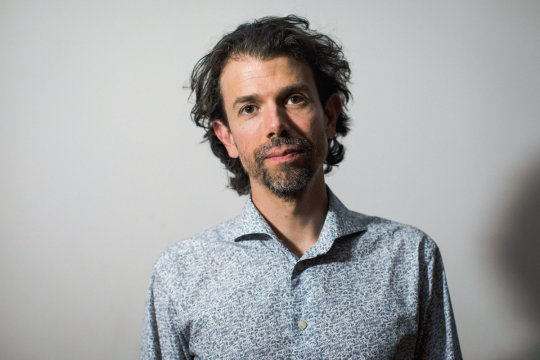
On previous recordings, Reverso has explored the music of French composers Gabriel Fauré and Maurice Ravel, linchpins of the early 20th century classical repertoire. Here, the trio of trombonist Ryan Keberle, pianist Frank Woeste, and cellist Vincent Courtois are inspired by another French composer, Lili Boulanger (1893-1918), the short-lived but prodigiously talented artist who was the first female to win the Prix de Rome. Such was the grief of her sister Nadia that she gave up her own promising composition career, devoting herself to pedagogy, a teacher to many Europeans and a raft of American expats. Reverso titles the recording Shooting Star as an acknowledgement of Lili’s extraordinary gifts. While the composer would likely have heard little jazz, her work serves as an excellent starting point for the original tunes written in response to it by Reverso. One wonders about balance issues a trio with this complement might encounter, but it never seems to be an issue, with Reverso careful to make every note heard.
“La Muse '' opens the album with liquid ostinatos from Woeste and legato melodies traded between Keberly and Courtois. “Obstination '' has a syncopated Iberian cast that recalls the craze for Spanish traditional music among the Impressionists. The solos use distinct registers, with Courtois flying high and Keberle playing resonant pedal tones. Woeste’s solo is a modal post-bop excursion that celebrates the off-kilter rhythms of the piece. Likewise, “Resilience” explores rhythmic variety, with alternations between quick polyrhythms and solos that vary it. A slow tune serves as an overarching motif. There is a bridge where small, repetitive segments take over before a return to the opening material, Keberle playing the main tune in octaves with Courtois.
The “Nocturne” is a venerable form, usually for solo piano. Reverso captures the mood with sculpted delicacy. A repeated tenor note in the piano underscores a chromatic bass-line alongside melancholy chords, as well as corruscating melodies between trombone and cello. Woeste brings out a filigreed soprano register melody in the bridge before returning to harmonies from the opening. Doubling of the melody by Keberle and Courtois gives way to another varied duet between them, culminating in a high trombone cry and a quick outro of repeated passagework. “Ma Jolie” has a bluesy trombone solo that is repeated with the cello playing liberal slides. The central section is led by Woeste, playing a zesty bit of cabaret music. Keberly returns to his solo while Courtois plays a pizzicato bass-line. The piano drops in with tasty harmonic fills. The quick cabaret music returns, and the piano and cello provide a sinuous take on the main tune to close.
“En Avant” deftly channels the texture and melodic approach of Impressionism, a style that, while not encompassing, appeared in Lili’s music. Courtois’s solo features Eastern sliding tone. Gamelan and other non-Western artists fascinated French musicians, notably Debussy, at the 1889 Paris Exhibition, and they continued to incorporate its signatures for decades. Keberle’s solo, on the other hand, is a more raucous affair, and Woeste plays dexterous small cells and a repeated stepwise progression. The close returns to referencing Impressionism and ends with halting utterances.
“Requiem” is a touching memento mori for Lili, with a haunting minor key melody that is deftly varied in its doublings. “Shine” too has a melancholy cast. However, the somber mood doesn’t prevail. “Lili’s Blues” imagines an introduction of Lili to “Le Jazz Hot,” with a plethora of glissandos and rollicking swing.
The recording closes with “Dernier Moteur” (“The Final Action”) in which bucolic riffs and mysterious, angular melodies are played by Woeste, Courtois adds a sumptuous solo, and Keberly provides countermelodies with slow glissandos that distress the crispness of the rest of the proceedings. A denouement is completed surprisingly, with the piano simply stopping to conclude the piece.
Creating “new standards” of early twentieth century music would be a far less imaginative choice than the approach taken on Shooting Star, where Lili Boulanger’s biography is as much an inspiration as her music. Reverso inhabits a musical space both of homage and innovation.
Christian Carey
#reverso#shooting star etoile filante#christian carey#albumreview#dusted magazine#ryan keberle#jazz#chamber jazz#Frank Woeste#Vincent Courtois#Lili Boulanger
3 notes
·
View notes
Text
Dr. Maurice Hinson
I have always respected Dr. Hinson’s work and his music. So much so that I went to Connecticut to take a class on Piano Pedagogy with him several years ago. I have also attended several local piano teacher workshops with him. At one of them, he claimed to remember me from that Connecticut class. Whether true or not, I treasure that comment and the signature on a piano book he gave me. We…

View On WordPress
#alfred.com#amazon.com#chamber music#Connecticut#Dr. Maurice Hinson#Juilliard School of Music#MTNA#Music Teachers National Association#O&039;Connor Music Studio#organist#pianist#piano#piano literature#piano pedagogy#piano teacher#video#workshops
1 note
·
View note
Text


25.02.23 - Day 53/103
I actually feel really accomplished today even though I didn't even do that much work, but somehow I hit that elusive sweet spot of balance in productivity and relaxation that makes you end the day not burnt out!
talked through another practice problem with my friend
finished my lesson materials
tidied some more
cooked a really nice Japanese curry
practised piano
studied for my pedagogy exam
#I also accidentally set off my fire alarm while cooking oops#100 days of productivity#day 53/103#studyblr#teaching#cooking#miss-shirley gets organised
24 notes
·
View notes
Text
thank you for tagging me marit (@rebel-ezra) <3
name: bente
sign: gemini
time: 15:55
last movie: barbie?? just realised i haven’t watched a movie in ages omg, but i’m seeing the new fnaf with my brother next monday!
last show: started watching the new seasons of disenchantment & sex education but i didn’t get far since i’m really busy with school atm :’)
when i created this blog: somewhere in 2018
other blogs: @ruelgifs but i lowkey abandoned it, sorry ruel love you
do i get asks/ may you send me asks: haven’t been that active recently so i don’t get that many asks, although i usually get them when people have feelings about my gifs :’) and people may send me asks, for sure!
average hours of sleep: when i actually need a good nights of sleep and force myself to go to bed; 7 or 8 hours, otherwise; 5 or 6
instruments: some piano when i have those little youtube to play them, i can’t read sheet music for the life of me
what i’m wearing: jeans with embroidered flowers, an oversized sweater and fluffy socks cause it’s COLD
dream job: pedagogical youth care worker, school social worker or some other position where i can put my pedagogy degree to good use lol
tagging, only if you want to of course: @hemmohoran @calumthoodshands @daydadahlias @burstingsunrise @ashtonsunshine
4 notes
·
View notes
Text

Linda Williams Rogier, BJU Class of 1985, Former Faculty/Staff.
Linda Williams Rogier, of Greenville, South Carolina, aged 84, went to be with her Lord and Savior, Jesus Christ, on Monday, April 15, 2024.
Linda was born in Dorothy, West Virginia, on September 13, 1939, to Robert and Dassie Williams. She graduated from Morris Harvey College (now College of Charleston) in 1961 with a Bachelor of Arts in English and from Bob Jones University in 1985 with a Bachelor of Arts in Piano Pedagogy. She married the love of her life, George Rogier, on June 17, 1961. After residing in Atlanta, Georgia for five years, they settled in Greenville in 1966. Linda dedicated thirty-eight years to Bob Jones University, teaching elementary school piano and leading the children's piano program at Bob Jones Elementary School. She also mentored interns in the Bob Jones University Piano Pedagogy major. She retired from Bob Jones University in 2004. Linda was an active member of Morningside Baptist Church for over forty years. One of her greatest enjoyments was playing the piano for church services.
Linda is survived by her husband of nearly sixty-three years, George; her daughter, Michelle Shuman (Keith) of Greenville; her sons, Larry (Janet) of Romulus, Michigan, and Robert (Micah) of Morrisville, North Carolina. She is also survived by her grandchildren, Laran, Elyse, and Brysen Rogier of Romulus, Michigan. Additionally, she leaves behind her nieces, Sherry White of Huntington, West Virginia, and Beth Wiebe of Hooker, Oklahoma; along with her brothers-in-law, Michael Rogier of Cross Lanes, West Virginia, and Patrick Rogier of Rand, West Virginia. Linda is also survived by cherished nieces and nephews from her husband's side; and a host of cousins.
Linda was preceded in death by her parents; her sister, Lois White of Huntington, West Virginia; and her brother-in-law, Doug Rogier of Greenville, South Carolina.
#Bob Jones University#BJU Alumni Association#Obituary#BJU Hall of Fame#Linda Williams Rogier#Class of 1985#Faculty/Staff
0 notes
Text
How the 24 Italian Songs and Arias and the Suzuki Violin School are Similar, Pt. 5
Now that we ironed out the inherent problems with the 24 Italian Songs and Arias and the Suzuki Violin School regarding historical practices, let's hear it from respectively vocal and violin pedagogy experts (as well as Poe).
"(Those chordal edits of late Renaissance and Baroque music) was common in 19th century editions because (Alessandro Parisotti and G. Schirmer's editors) had very little exposure to and experience with Renaissance and Baroque music, since only then-recently-composed music was in fashion," harpsichordist and musicologist Alice M. Chuaqui Baldwin explained.
"The editors were just making guesses about what the music was supposed to sound like, and those guesses were based on Romantic music."
Plus, one of the pieces in the 24 Italian Songs and Arias was composed by Parisotti. He ascribed his aria, "Se tu m'ami," to Giovanni Battista Pergolesi. A good comparison is the Henry Lane Wilson English-language air, "Shepherd! Thy demeanour vary." He ascribed it to Early Classical composer, Thomas Brown Jr. He included it in his publication, Old English Melodies, in 1899.
youtube
Will Crutchfield of opera organization Teatro Nuvo, described the practice of not only editing Baroque and classical music pieces to suit Romantic Era mores, but also compose in the style of them, as Pseudo-Baroque for School and Parlor.
"It flourished in the later 19th century, when quite a few composers felt the urge to write gavottes, minuets, and little da capo arias - more or less in 18th-century styles, but always with telltale traces of the present day intermixed," he explained, "This went hand-in-hand with adaptations of actual Baroque music."
It's any wonder why Shinichi Suzuki based the edits and piano-violin arrangements of Baroque pieces off those published in the 19th century and the turn of the 20th century when developing the Suzuki Method.
"The question of authenticity in a composition is a valid question," A. Brown remarked on MaestroNet. "The words 'edited by' indicate that you are seeing a version and not necessarily an original. Depending on the editor, many versions can be totally unfaithful to the original. Some can be very useful and good."
"For the music of many composers, there are urtext publications that profess to present a printed text of the composer's intention. This could be taken from the earliest example or a manuscript in the composer's hand. Often there may be several versions, maybe all in the composer's handwriting."
youtube
"Editions of some of the more standard repertoires such as (the JS Bach concertos and GF Handel sonatas) are very old-fashioned, likely to be old German editions from the turn of the 20th century," Toscha added, "Suzuki allegedly studied with Karl Klingler (a student of Joachim) of Berlin during the 1930s, and seems to have had an almost blind faith in old German editions."
"But the fact was, (the Romantic-era German school of violin playing) was already out-of-date in the 1930s (Russian and Franco-Belgian school were very much in vogue already). And today, I don't think any serious professional violinists will likely to use those fingerings and bowings found in the Suzuki books."
Neither would pianists very likely play the figured basses of, say, Solfege No. 128 composed by Francesco Durante fresh off the 1772 transcript of Solfèges d'Italie as opposed to from the piano part written on 24 Italian Songs and Arias whenever a vocal student would perform "Vergin, tutt'amor" at a college vocal recital or state solo and ensemble MPA any time soon. The former keyboard part would work historically best on an organ alongside a monophonic bass instrument like a cello or bassoon.
Poe explained why:
Infusion of Romantic stylistic elements might overshadow Baroque and Classical sensibilities, leading to interpretations that felt more modern and less true to the original contexts. The aggressive use of dynamic contrasts in the piano scored could overshadow subtle nuances, potentially masking the delicate interplay that defined the original works. Excessive variations in dynamics might lead to a lack of clarity in conveying the specific moods (aka "affects") the composers aimed for, disrupting the emotional flow of the pieces. Allowing for significant rubato and personal expression might result in performances that diverged too far from the composers’ original pacing, creating interpretations that felt disjointed or overly interpretative. Performers might prioritize individual expression over fostering the intended narrative of the song, leading to varied interpretations that could confuse the piece’s emotional essence. In some arrangements, the dense piano textures could obscure the vocal line, making the lyrics less discernible and diluting their emotional significance. Alterations in accompaniment could lead to mismatches between musical phrasing and lyrical content, disrupting the emotional connection between text and music. By reinterpreting pieces for contemporary performance contexts, the historical and cultural significance of the original works may be diminished, leading to a detachment from the composers’ intents.
youtube
As Howard Goodall explained in the documentary Big Bangs, this was all because by the time Parisotti published Arie Antiche in 1885 - the piano already bore 88 notes. "It gained an iron frame, tougher wire strings, and a bigger range to fill big concert halls with sound, like an orchestra of one," he remarked.
"So, whenever a student of mine reaches around Book 4," Toscha recommended, "I'd start encouraging them to get more modern or urtext editions. For the pieces that don't have alternative modern editions, I'd try to 'update' fingerings and bowings for my students."
For those who already accomplished all airs of the 24 Italian Songs and Arias and are aspiring to be classical vocalists (with more and more of them collaborating with period instrumentalists), Poe suggests:
Performers should study the historical and cultural context of the pieces, including the composer’s life, style, and the music's original performance practices. This knowledge will inform their interpretations and help maintain authenticity. Working directly from original manuscripts or historically informed editions can help performers understand the nuances intended by the composer. While honoring traditional practices, performers can incorporate subtle contemporary elements—such as slight dynamic adjustments or varied tempos��that enhance emotional expression without straying too far from the original intent. Exploring new interpretation styles can engage audiences. However, these should be rooted in a clear understanding of the piece's essence to avoid diluting its authenticity. Whenever possible, use period instruments or replicas to achieve a more authentic sound. For example, using a fortepiano (or at least a digital piano hooked up to a PC with the fortepiano patch from a VST like Pianoteq) instead of a modern piano can enhance the period feel of Classical music (e. g. "O del mio dolce ardor" from Christoph Willibald Gluck's 1770 opera Paride ed Elena). Incorporating historical performance techniques, such as ornamentation specific to the era or appropriate articulation styles, can bring a fresh yet authentic character to the music. Providing audience members with insights into the piece’s background, including its emotional and historical significance, can enhance their appreciation and connection to the music. Collaborating with musicians who specialize in historically informed performance can enrich interpretations and ensure that the performance remains authentic while exploring new expressive possibilities. Seeking input from musicologists, educators, and other performers can provide valuable perspectives and help refine interpretations.
And vocalists shouldn't forget to listen to period instrument versions of the works represented in the 24 Italian Songs and Arias (and subsequent versions) wherever and whenever possible.
The same questions that pianist and composer Mark Polesky imagined arising whenever Suzuki Method students would listen to the pieces they are working in their original forms (especially those involving historically-informed performance, or HIP, ensembles) would apply similarly to vocal students.
Similarly, they'll likely ask, "Why is the soloist singing something different from what’s in the score? Can I add embellishments too? When and how? Why is everything tuned flat? Where is the harpsichordist getting all those notes from? Why are there so few dynamics, articulations, etc. in the original score? Do I have to play it the way it’s written in my score?"
And here's another thoughtful question they are likely going to ask: "Why is the male soloist singing in an alto (read: countertenor) or soprano (read: sopranist) voice in the recording?"
youtube
*I insert rightly a TW for countertenor haters, as this is the rendition of "Delizie, contenti," an aria from the 1649 opera Giasone featured in Parisotti's Arie Antiche, as Francesco Cavalli intended. Accompaniment by Rene Jacobs's Concerto Vocale Gent? You bet. The delightful alto voice of Michael Chance making it authentic? Check and double-check.*
"(An advantage) of listening to the (original versions of pieces in the 24 Italian Songs and Arias and the Suzuki Violin School) is the exposure to baroque performance practice," Polesky remarked, "And students who see the original manuscripts and early editions can learn to read the modern interpretive editions with a more critical eye (and to listen to the originals with a more critical ear)."
youtube
With the early music realm ever-expanding, maybe someday an HIP performance involving said countertenors of the megillah of the entirety of Antonio Caldara's 1710 opera La costanza in amor vince l'inganno would someday come to fruition. Audiences will soon enough be treated to hear a rendition of "Sebben, crudele" - either sung by a female soprano or sopranist - that is true to his intent.
Some early music lovers and historically-minded musicians only can dream...

#early music#historically informed performance#24 italian songs and arias#suzuki method#shinichi suzuki#baroque music#Youtube
0 notes
Text

Kiran Nadar Museum of Art (KNMA) announces the Centre Stage Festival, a two-day cultural spectacle on December 8th and 9th, 2023 at Sunder Nursery. Featuring five young performers from the world of dance and music, the festival promises to be a vibrant celebration of creativity and cultural expression. Through this festival, KNMA honours India’s rich and abundant cultural traditions and serves as a platform to showcase and nurture these extraordinary artists.
The Centre Stage festival is set to unfold as a cultural highlight, presenting the exceptional talents of young and emerging artists reshaping the cultural landscape. Aniruddh Aithal, a 25-year-old Hindustani classical vocalist, will captivate the audiences with his soulful renditions, while 13-year-old Bharatanatyam dancer, Akshatha Viswanath exudes incredible energy, displaying a mastery in Bharatanatyam that transcends her age. In the genre of Western classical music enthusiasts can anticipate a mesmerizing performance by Anuvrat Choudhary, an accomplished musician with accolades in national-level piano competitions and a rich background in music education and pedagogy. Anuvrat will be performing two duets featuring 14-year-old Martina Charles, a violin prodigy known for completing all 8 grades in violin from Trinity College London and achieving the Fellowship of Trinity College London (FTCL), a rare accomplishment as the youngest in India and the first in Kerala. The second duet will be with Eera Gupta, a dancer, trained in jazz, contemporary and modern dance.
0 notes